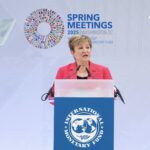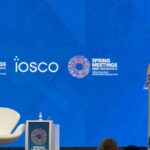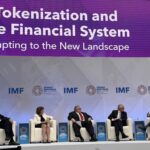The world economy has shown remarkable resilience over the past six months despite trade disruptions, tightening financial conditions, and ongoing geopolitical uncertainty, according to International Monetary Fund (IMF) Managing Director Kristalina Georgieva.
Speaking at a high-level panel discussion titled “Debate on the Global Economy: Shaping Economic Policies Amid a Shifting Global Landscape” during the 2025 Annual Meetings of the World Bank and the IMF in Washington D.C., Georgieva said that while conditions worsened compared to a year ago, they have improved since April.
She was joined by President of the Republic of Singapore, Tharman Shanmugaratnam; President, European Central Bank, Christine Lagarde; Chair and CEO, NASDAQ, Adena Friedman; and Professor Kennedy School of Government, Harvard University, Gordon Hanson.
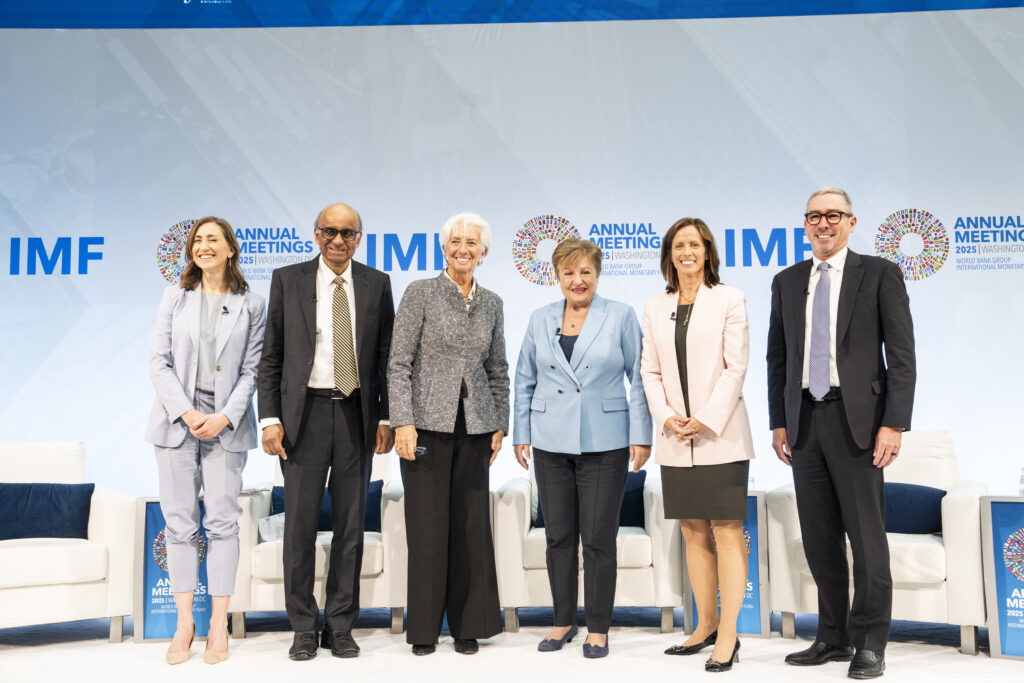
Throughout the discussion, panelists agreed that while global growth has held steady against formidable headwinds, vulnerabilities remain. Tariff reconfigurations, technological disruptions, and monetary policy transitions continue to reshape the global economic architecture.
Moderator Lisa Abramowicz of Bloomberg steered the debate toward future preparedness, prompting consensus on the need for flexibility, multilateral coordination, and innovation in economic policymaking.
“Vis-à-vis 12 months ago, the global economic situation has gotten worse, but compared to six months ago, it has gotten better,” Georgieva said, noting that earlier fears of a growth contraction did not materialize. “The world economy has been remarkably resilient.”
Georgieva attributed this strength to decades of policy discipline and institutional reform, particularly in emerging markets, as well as the agility of the private sector. “Countries have built strong fundamentals, good policies, strong institutions, and the private sector has taken a larger role in the economy. Good policies pay off,” she said.
Another factor, she added, was the restraint shown by most nations in the face of rising U.S. tariffs. “With only two exceptions, the vast majority of our 191 member countries chose not to retaliate. Most said, ‘Thank you, but no thank you. We don’t want a trade war.’ That helped retain trade as an engine of growth,” Georgieva explained.
However, she warned that this resilience “has not been fully tested” and identified three key risks ahead: a possible escalation of trade tensions, stretched asset valuations—especially in AI-linked investments—and the ever-present threat of unforeseen global shocks. “I don’t know what the next shock is going to be, but I’m confident there will be one,” she cautioned.
Singapore’s President Tharman Shanmugaratnam described the current environment as a “setback” for Asia, but one that could ultimately lead to greater regional integration and new trade partnerships.
“It’s a setback for Asia as a whole, and for Southeast Asian nations in particular,” he said. “But we have to start thinking about how we can make it an opportunity.”
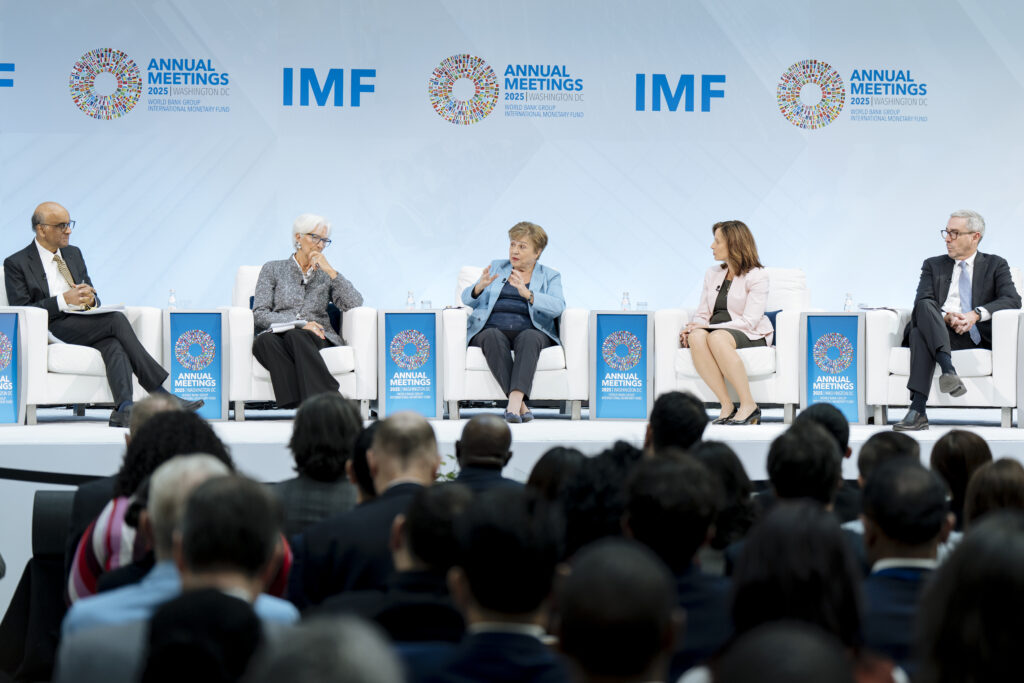
Shanmugaratnam noted that most Asian economies outside China face a “double whammy” of direct U.S. tariffs and diverted Chinese exports that are flooding regional and European markets. “Outside China, many Asian economies are being hit by tariffs on one hand and trade diversion on the other,” he said.
He also highlighted two longer-term structural shifts affecting the region: the rise of “onshoring” of manufacturing in both the U.S. and China, and the gradual weakening of the U.S.–China trade corridor that underpinned much of Asia’s export-led growth.
“As that corridor thins out, we have to find a substitute for it,” Shanmugaratnam said. “If the U.S. is reconfiguring trade, we’ve got to reconfigure trade as well.”
The Singaporean leader urged smaller and middle-power nations to exercise agency in reshaping trade alliances, pointing to the potential of multilateral blocs such as the Comprehensive and Progressive Agreement for Trans-Pacific Partnership (CPTPP), the European Union (EU), the Gulf Cooperation Council (GCC), and the Association of Southeast Asian Nations (ASEAN).
“If the CPTPP and the EU start collaborating, that’s about 42 percent of world trade,” he said. “If ASEAN and the EU collaborate, that’s more than a third. So, if we want to reconfigure world trade, let’s do it on our own terms.”
He called the U.S. tariffs a “blessing in disguise” for spurring regional integration and inter-bloc cooperation. “We may go through a period of adjustment, but I believe we’ll emerge with a new resilience—and we must work towards it,” Shanmugaratnam said.
ECB President Christine Lagarde struck an optimistic note, saying the global economy has consistently surprised to the upside over the past year, defying predictions of inflationary spirals and currency volatility.
“My conclusion is that the worst is not always certain,” Lagarde remarked. “We’ve been surprised to the upside.”
She recalled that one year ago, policymakers had anticipated tit-for-tat trade retaliation and imported inflation in Europe. “Europe didn’t do any of that,” Lagarde said. “As a result, the expected inflation contributor did not materialize. On the exchange rate front, we expected the euro to depreciate and the dollar to appreciate. In fact, we saw exactly the opposite—no imported inflation as a result.”
These outcomes, she noted, helped the ECB avoid the typical policy dilemma of choosing between slowing growth and controlling inflation. “The risks to growth and inflation eventually narrowed and became far more balanced,” she said.
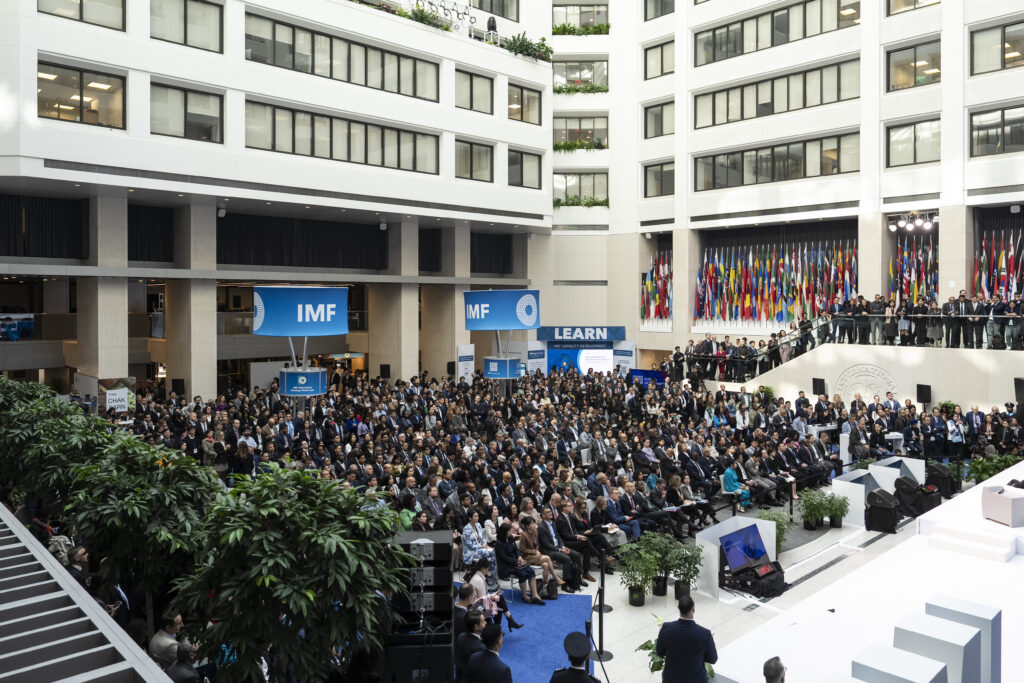
Looking ahead, Lagarde emphasized that advanced and emerging economies alike must cooperate to manage new sources of financial instability, especially from technological innovation in finance. “It will be incumbent upon us—all countries—to agree on how best to maintain financial and price stability while fostering inclusive and sustainable growth,” she said.
Chair and CEO of NASDAQ, Adena Friedman, said investors have largely priced in the macroeconomic uncertainty discussed by policymakers, and are adjusting to a changing monetary environment.
“Investors have done a good job of synthesizing everything we’ve been talking about here and demonstrating it in the markets,” she said.
Following the pandemic and a period of rapid monetary tightening, investors had adopted a “risk-off stance,” Friedman said. But entering 2025, moderating policies in the U.S. and Europe have started to restore balance. “We’re now likely to see moderating monetary policy in the United States. We’ve already seen that in Europe,” she said, calling it “extremely helpful to small caps.”
She cautioned, however, that smaller firms still face severe constraints. “Small-cap companies are facing a situation where 40 to 45 percent of their earnings are going toward paying interest expenses right now,” Friedman explained. “They can’t reinvest their capital to grow; they’re using it to pay down debt. That’s very constrictive.”
Harvard University’s Gordon Hanson offered a more structural perspective, pointing to the role of the U.S. Supreme Court in shaping the global trade landscape. He noted that the Court is expected to rule on the International Economic Emergency Powers Act, which could determine whether presidents have unilateral authority to set tariffs or whether congressional approval will be required.
The uncertainty in U.S. trade policy has limited retaliation from other countries, Hanson said, suggesting that the unpredictability of Washington’s approach has tempered global responses.
He described a world increasingly split into two systems: one with stable, rules-based trade relationships and another shaped by unilateral and unpredictable actions. If the President’s tariff-setting powers are constrained, it could lead to more manageable trade conflicts, he said.



